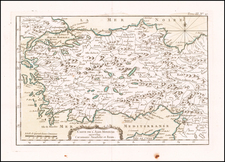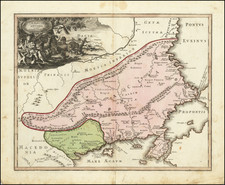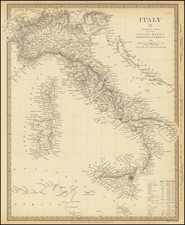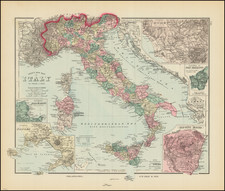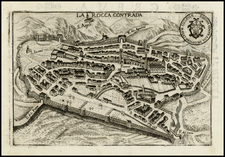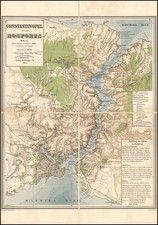Cairo-Published Bird's-Eye View
The Turco-Italian War: Map Showing The Military Positions in Tripoli, published by The Cairo Punch in 1912, is a color-printed news map that depicts the military positions around Tripoli during the Turco-Italian War. The map provides valuable historical insights into the military strategies and key individuals involved in this conflict.
The map provides a bird's-eye view of the eastern Mediterranean, stretching from west of Solum to Tunis, with Italy, Greece, and the Balkans forming the backdrop. This perspective offers viewers a comprehensive understanding of the geographical context and scope of the conflict.
The inclusion of portraits of key military figures, such as Neshiat Bey, General Caneva, General Briccola, and Enver Bey, further enriches the map's historical value. These individuals played significant roles in the war, and their inclusion on the map underscores their influence and importance.
The Turco-Italian War
The Turco-Italian War, also known as the Italo-Turkish or Libyan War, took place from 1911 to 1912. The conflict stemmed from Italy's aim to expand its colonial holdings and gain control over Libya, which was then under Ottoman rule. Leveraging its superior naval capabilities, Italy initiated the war by launching a surprise attack on the Ottoman province of Tripoli. Despite facing initial resistance, Italy successfully established control over Tripoli and the surrounding coastal areas. The conflict was notable for being one of the first wars to incorporate modern technologies such as airplanes and automobiles into warfare. The war concluded with the Treaty of Lausanne in 1912, which led to the cession of Libya, along with the Dodecanese Islands in the Aegean Sea, to Italy. This conflict served as a precursor to the dissolution of the Ottoman Empire during World War I and marked a significant milestone in Italy's colonial expansion.
The Battle of Tripoli in the context of the Turco-Italian War occurred in October 1911 when Italy launched a naval bombardment and subsequent amphibious invasion on the Ottoman-controlled city of Tripoli (present-day Libya). Italy, eyeing control of North Africa, decided to seize the Ottoman territories in Libya to further its colonial ambitions.
The Italian fleet, significantly superior to the Ottoman navy, easily secured a blockade, and their troops captured the city with little resistance after a heavy bombardment. The Italians declared Tripoli to be an Italian city the day after its capture, on October 5, 1911.
However, despite capturing the city of Tripoli, the Italians had difficulties in expanding their control over the rest of the country due to stiff resistance from local populations and Ottoman forces, leading to a protracted war that lasted until 1912.
This battle was a significant event in the Turco-Italian War as it marked the beginning of Italy's colonial rule in Libya, which lasted until the end of World War II.









